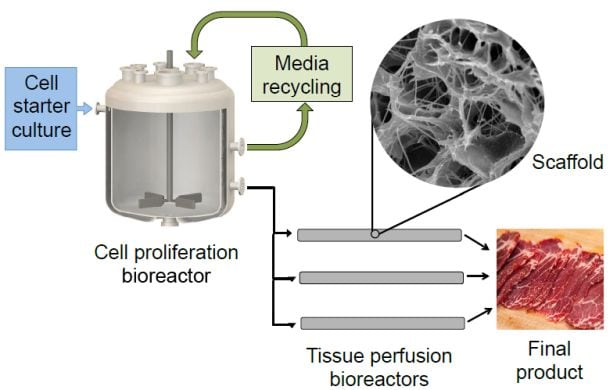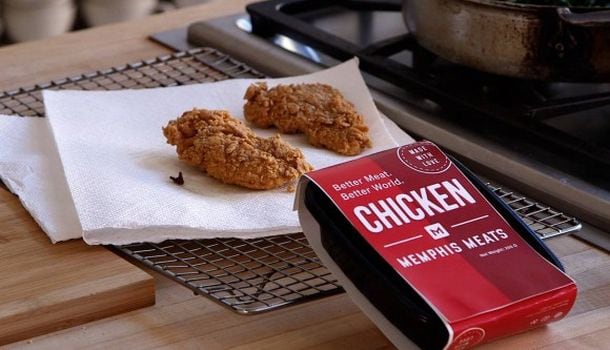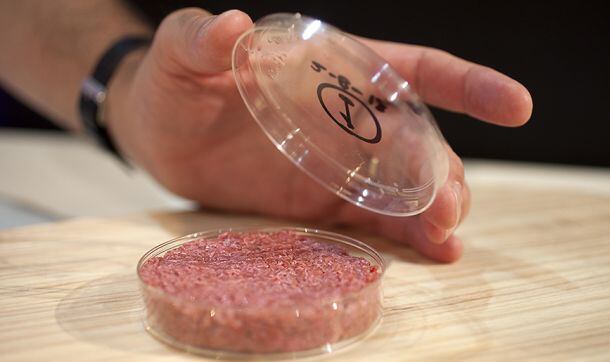Speaking to FoodNavigator-USA at the IFT show in Las Vegas this week, Davis Wright Tremaine counsel Rebecca Cross said: “I think there are some misperceptions out there in the industry that these products are not regulated, or regulators don’t know what to do with them, or that there is some kind of regulatory gap, and that’s just not the case.
“These products can be regulated under the existing regulatory and statutory scheme.”
Both the US Food and Drug Administration (FDA) and US Department of Agriculture (USDA) are closely monitoring developments in the burgeoning cell cultured meat industry – whereby companies such as Memphis Meats, MosaMeat, Hampton Creek and SuperMeat are looking to build commercial scale production facilities for ‘growing’ meat from cells that differentiate into fat, muscle, and connective tissue cells, without using live animals, said Cross.
I think that the initial entry point for conversations will be with the FDA
She explained: “Regulators are very much expecting these products to come on the market … The National Academy of Sciences recently issued a report that was done at the request of several agencies including the FDA and the USDA, which looked at these products and other products that are anticipated to come out in the next 5-10 years.
"And the report specifically referenced clean meat – they referred to it as ‘cell cultured meat’ – as an area for high growth potential and also an area that can be regulated under existing regulations."
She added: “I think that the initial entry point for those conversations [between clean meat companies and the US government] will be with the FDA and the report, as I read it, referenced that as well. The companies and attorneys in this space are [already] having conversations with the agencies in order to prepare them for more formal conversations when the final products are in the market.”
Clean meat is food
But should regulators treat clean meat in the same way as produced from raising animals, or is it something else?
Said Cross: “Clean meat is food, it’s a whole food, it’s not a drug, a new animal drug, an additive, a supplement or anything else, and the way regulators regulate whole foods is through post market mechanisms. They don’t actually require any pre-market approval process.”
But she added: “That being said it’s in everyone’s interests to make sure that regulators and companies are on the same page as to how these products will be regulated ensuring that everyone knows they are safe for consumers. So I expect there will be a consultation process with the FDSA and potentially also with the USDA, but it will be a voluntary process.”
“We are following the developments in this area and, as always, are willing to engage with firms on the relevant safety and legal requirements for products they intend to market.”
FDA spokesperson, 6.30.17
"FSIS has not made any determinations on 'cultured meat' (i.e., animal species-specific tissues cultivated in vitro from livestock stem cells)... FDA would need to evaluate the safety of 'cultured meat' first before FSIS could make any type of labeling determinations and determine whether it meets the definition of 'meat.'"
USDA FSIS (food safety and inspection service) spokesperson, 7.5.17
Labeling: What should we call clean meat?
So what should we call cell-cultured meat, and will regulators likely require a special kind of label/descriptor that differentiates it from the kind raised from animals?

Currently, the FDA has three ways it allows companies to label their products, observed Cross: “By a standard of identity if there is one, by a common or usual name if there is one, or by an appropriately descriptive term. So using any of those paradigms the products could be called meat, hamburger, poultry, fish, or a species of fish or whatever the individual products might be.
“In addition to that however, I’d expect companies would want to [voluntarily] advertise the benefits of their products as being free from animal slaughter and clean.”
If cultured meat is 'clean,' what does that say about regular meat?
In other words, from a legal perspective, regulators will likely conclude that meat is meat, whether it’s grown in-vitro [outside the animal] or in-vivo [inside the animal]. However, companies in the cultured meat space will likely seek to actively promote the fact that they are not raising or slaughtering animals both from a marketing perspective (sustainability, animal welfare) and from a desire to be completely transparent with consumers, she predicted.
As to what kinds of terms firms might use, the term 'clean' meat [which is grown in a sterile environment] is likely to get some industry push-back (given the tacit implication that the regular variety is 'dirty), while terms such as 'lab-grown,' 'invitro' or 'cultured' meat are not very consumer friendly, acknowledged speakers at an education session on clean meat at the IFT show on Monday afternoon.
Read more about clean meat HERE and HERE.

'Meat' per se may satisfy regulators, but for full transparency, companies in the cultured meat space will likely want to describe it in such a way that it is clearly differentiated from its farm-raised counterpart, predicted speakers at an education session on clean meat at the IFT show on Monday afternoon.

Products described by column B are those that represent an expansion of the familiar set of organismal hosts and genetic pathways, for which there are few comparators but nonetheless well-established approaches to assessing risk. Examples include animal cell culture–derived products (such as cowless meat or leather) and plants for bioremediation, decoration, or other environmental or consumer use.
USDA and FDA have a long history of coordinating their complex shared jurisdiction to regulate food safety. Thus, for example, FDA has exclusive regulatory jurisdiction over live animals intended to be used for food, but USDA oversees slaughter and processing of meat and poultry.
Synthetic food products, such as synthesized meat and eggs produced without the intermediation of animals, appear to fall outside the definitions of non-GE meat and egg products that FSIS regulates and responsibility for the safety of such products would lie primarily with FDA.
Future Biotechnology Products and Opportunities to Enhance Capabilities of the Biotechnology Regulatory System Report from the National Academy of Sciences, March 2017

Interested in finding out more about clean meat (plus the plant-based variety) and cutting edge new technology enabling firms to produce animal proteins via microbial fermentation?
Register for FOOD VISION USA 2017 in Chicago on November 13-15 and get the lowdown on clean meat from The Good Food Institute senior scientist Dr Liz Specht and how Geltor is producing gelatin without animals. See the latest speaker list HERE.
